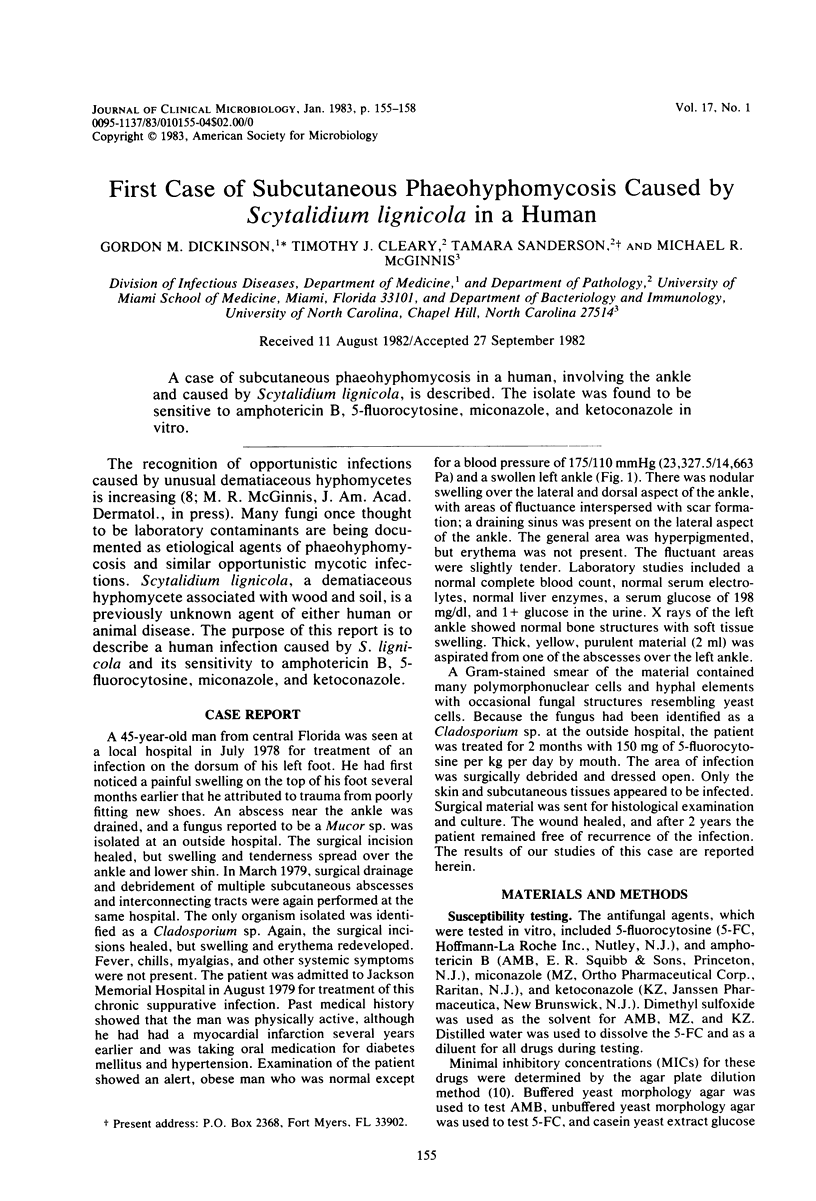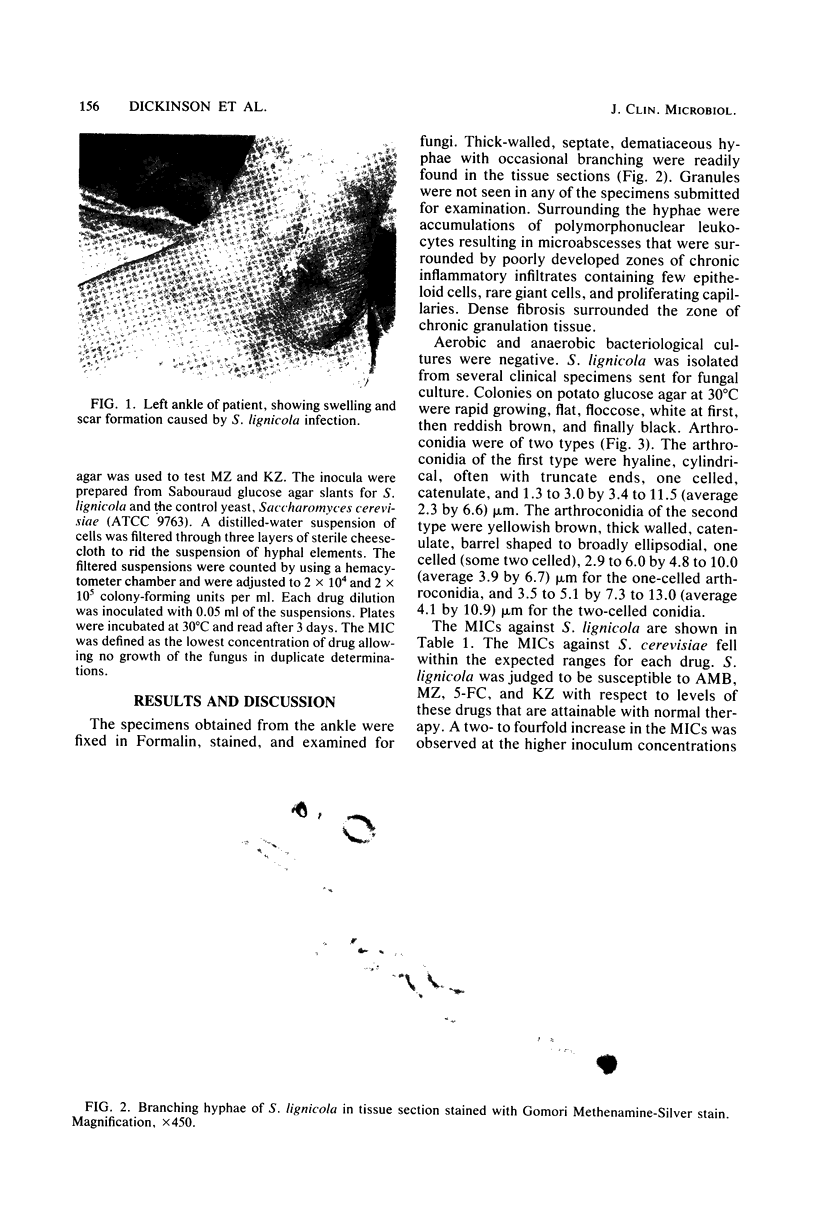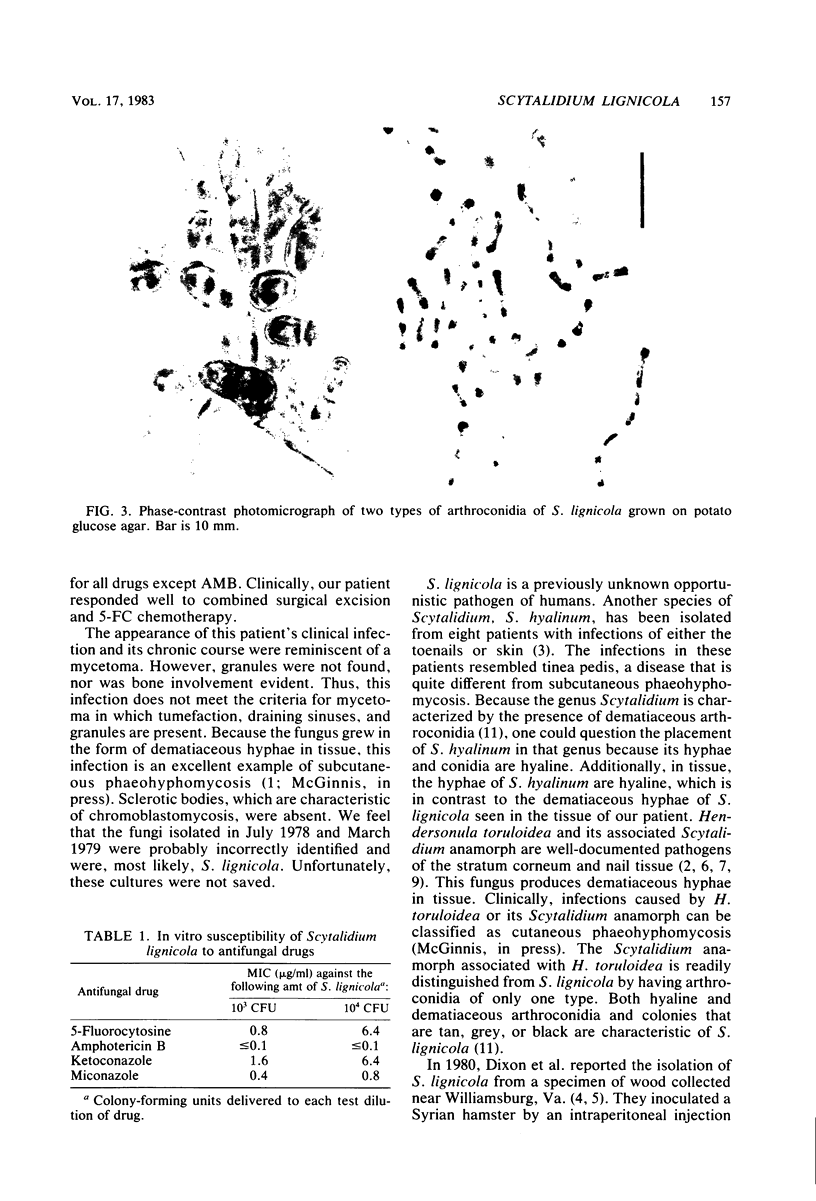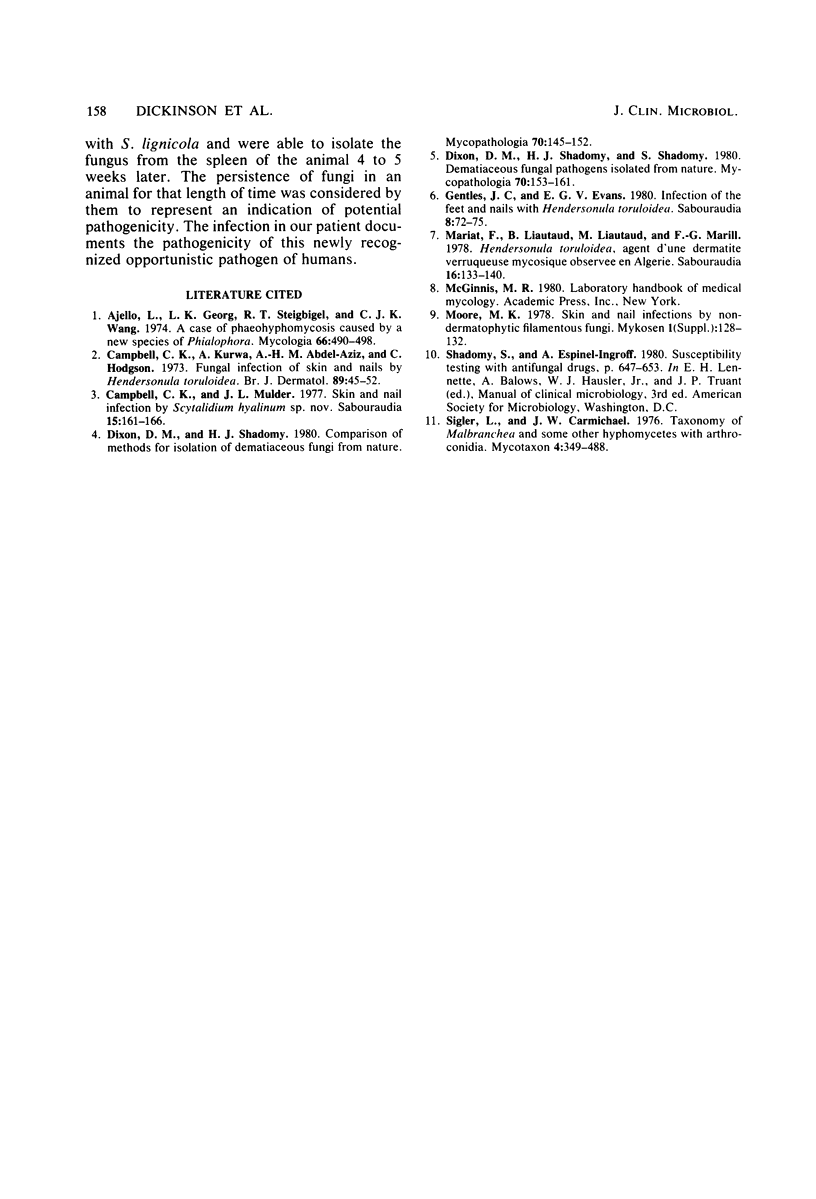Abstract
A case of subcutaneous phaeohyphomycosis in a human, involving the ankle and caused by Scytalidium lignicola, is described. The isolate was found to be sensitive to amphotericin B, 5-fluorocytosine, miconazole, and ketoconazole in vitro.
Full text
PDF



Images in this article
Selected References
These references are in PubMed. This may not be the complete list of references from this article.
- Ajello L., Georg L. K., Steigbigel R. T., Wang C. J. A case of phaeohyphomycosis caused by a new species of Phialophora. Mycologia. 1974 May-Jun;66(3):490–498. [PubMed] [Google Scholar]
- Campbell C. K., Kurwa A., Abdel-Aziz A. H., Hodgson C. Fungal infection of skin and nails by Hendersonula toruloidea. Br J Dermatol. 1973 Jul;89(1):45–52. doi: 10.1111/j.1365-2133.1973.tb01916.x. [DOI] [PubMed] [Google Scholar]
- Campbell C. K., Mulder J. L. Skin and nail infection by Scytalidium hyalinum sp. nov. Sabouraudia. 1977 Jul;15(2):161–166. [PubMed] [Google Scholar]
- Dixon D. M., Shadomy H. J., Shadomy S. Dematiaceous fungal pathogens isolated from nature. Mycopathologia. 1980 Mar 31;70(3):153–161. doi: 10.1007/BF00443026. [DOI] [PubMed] [Google Scholar]
- Gentles J. C., Evans E. G. Infection of the feet and nails with Hendersonula toruloidea. Sabouraudia. 1970 May;8(1):72–75. [PubMed] [Google Scholar]
- Mariat F., Liautaud B., Liautaud M., Marill F. G. Hendersonula toruloidea, agent d'une dermatite verruqueuse mycosique observée en Algérie. Sabouraudia. 1978 Jun;16(2):133–140. [PubMed] [Google Scholar]
- Moore M. K. Skin and nail infections by non-dermatophytic filamentous fungi. Mykosen Suppl. 1978;1:128–132. [PubMed] [Google Scholar]





